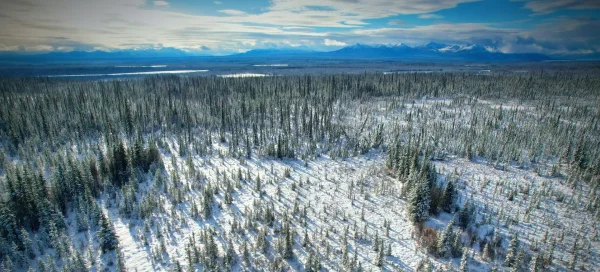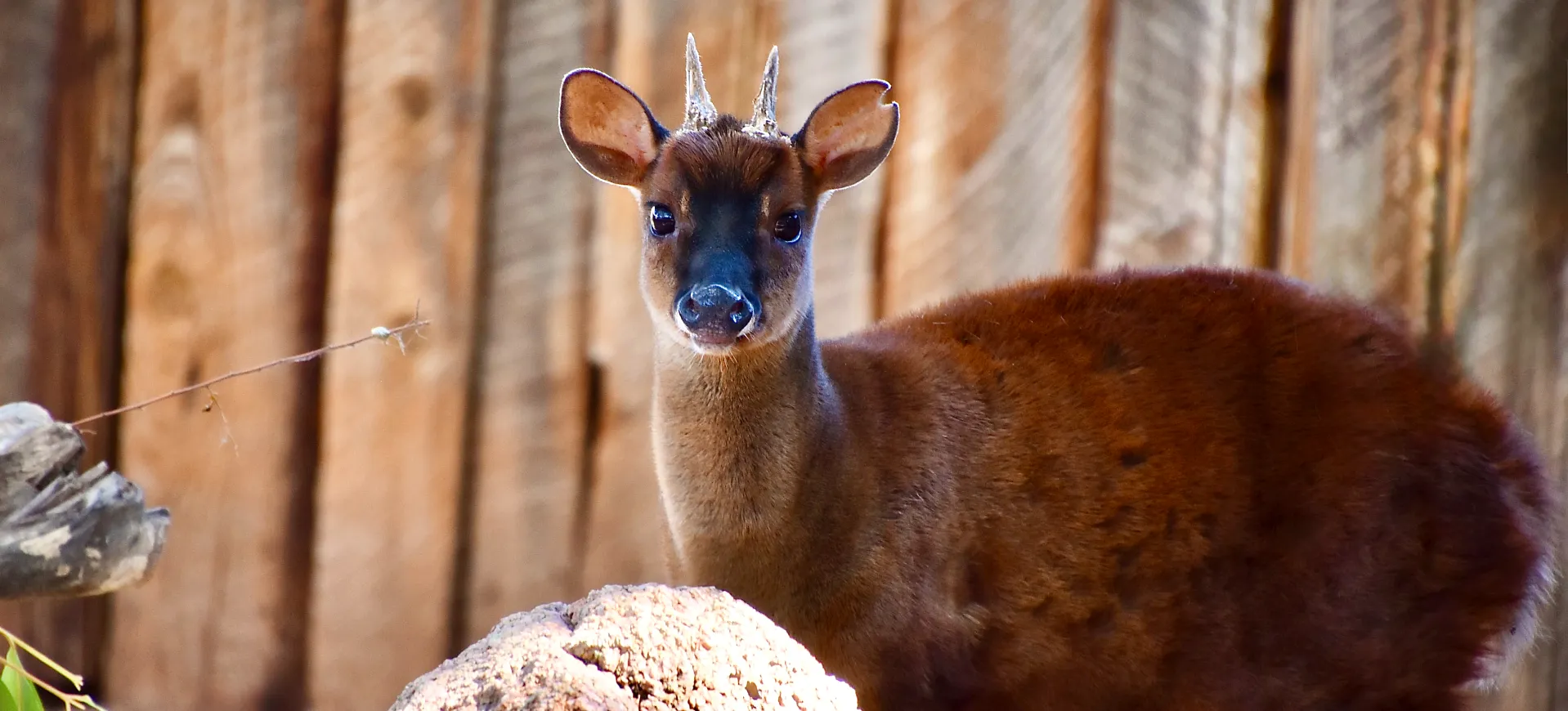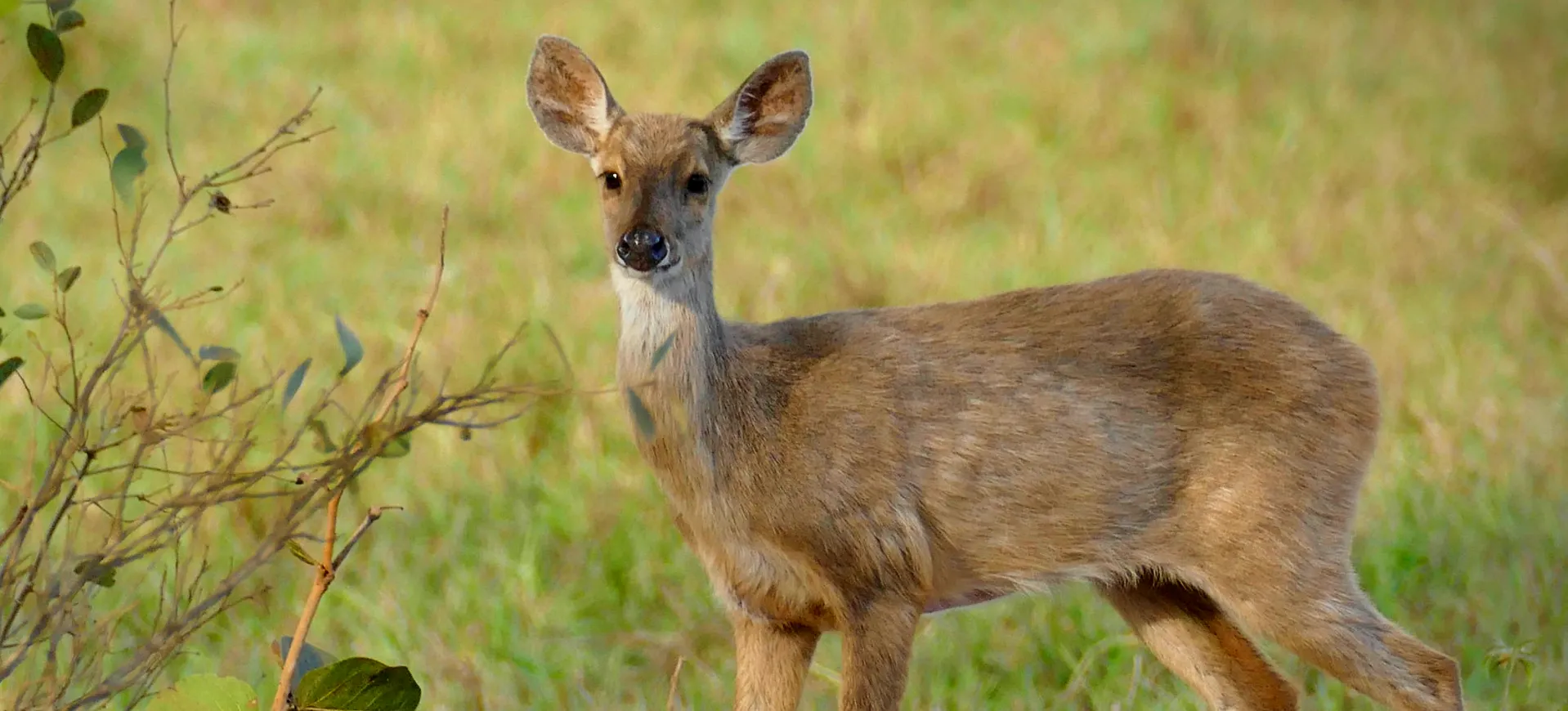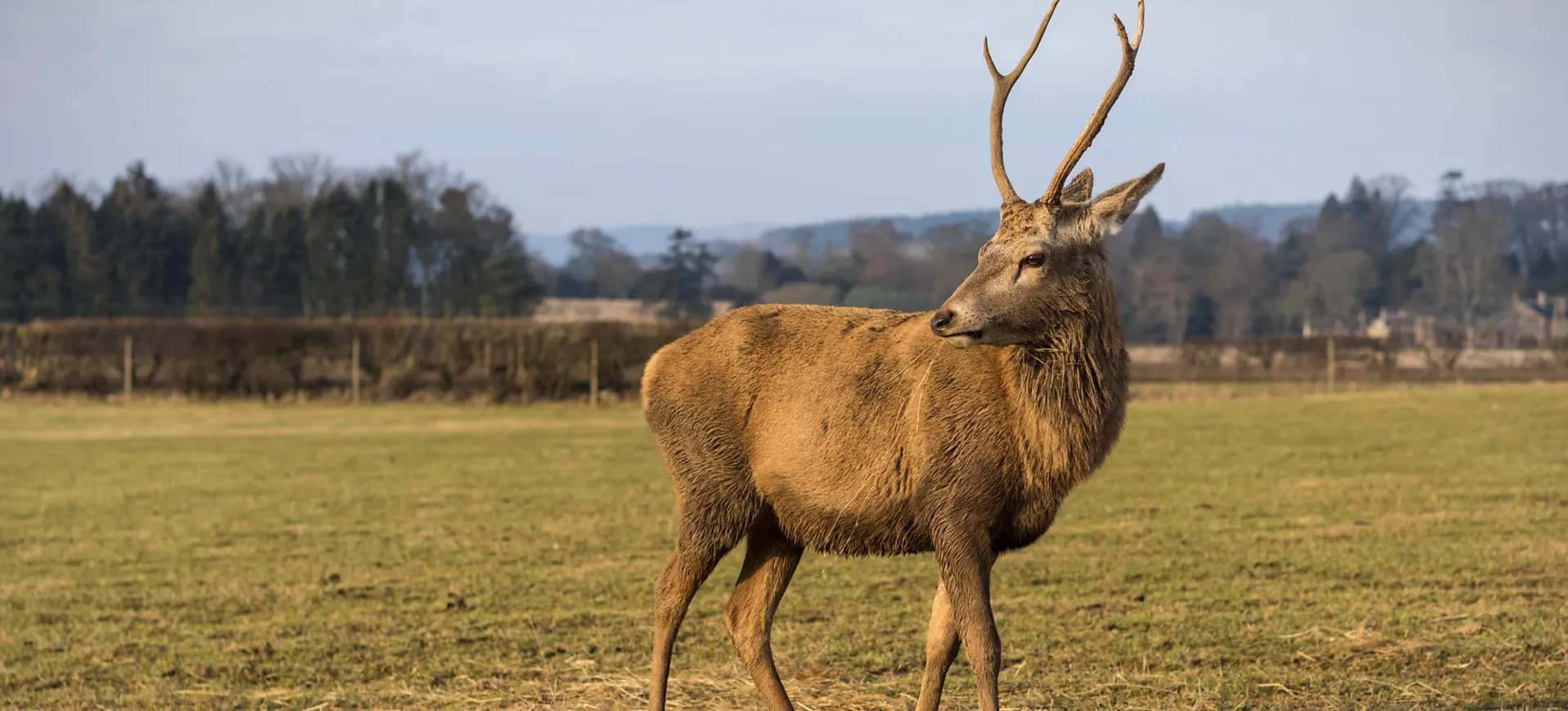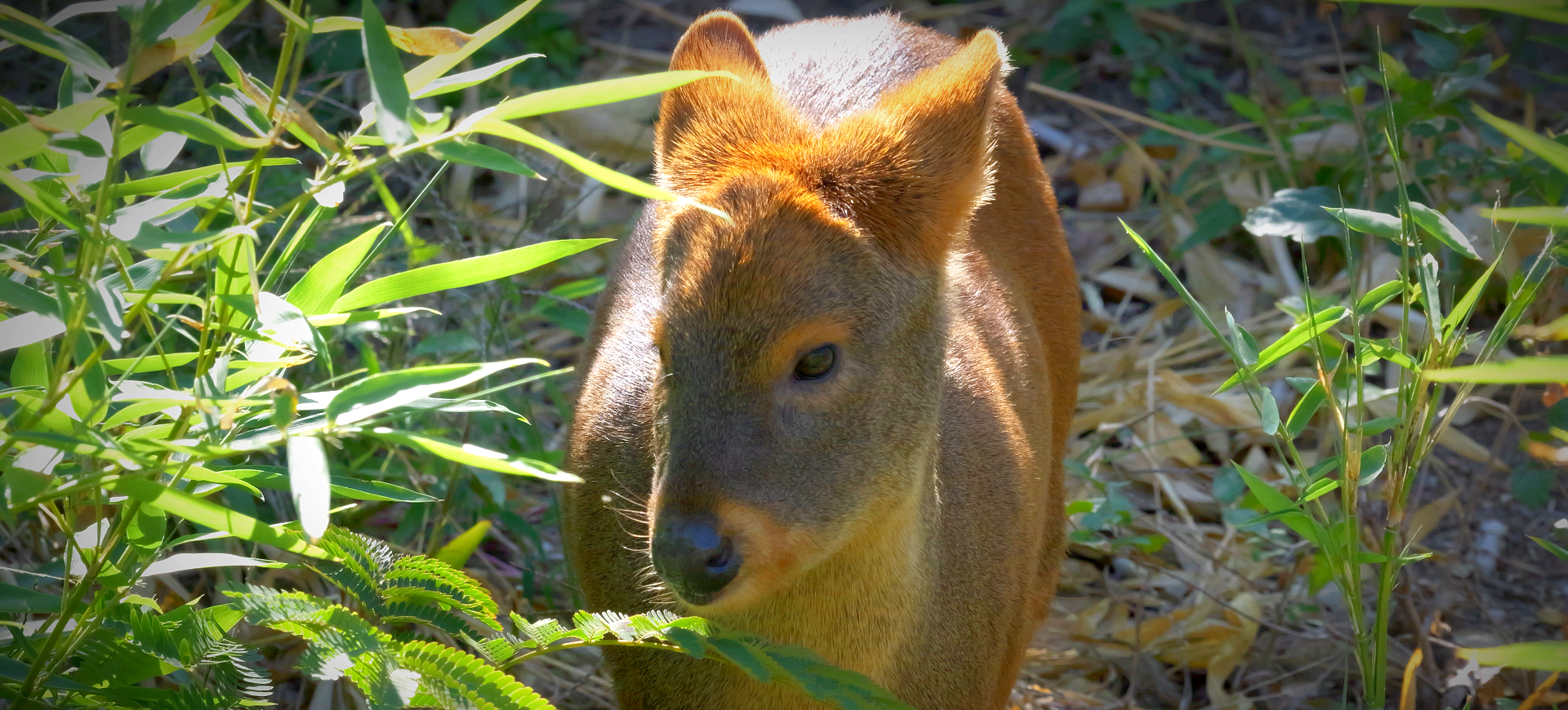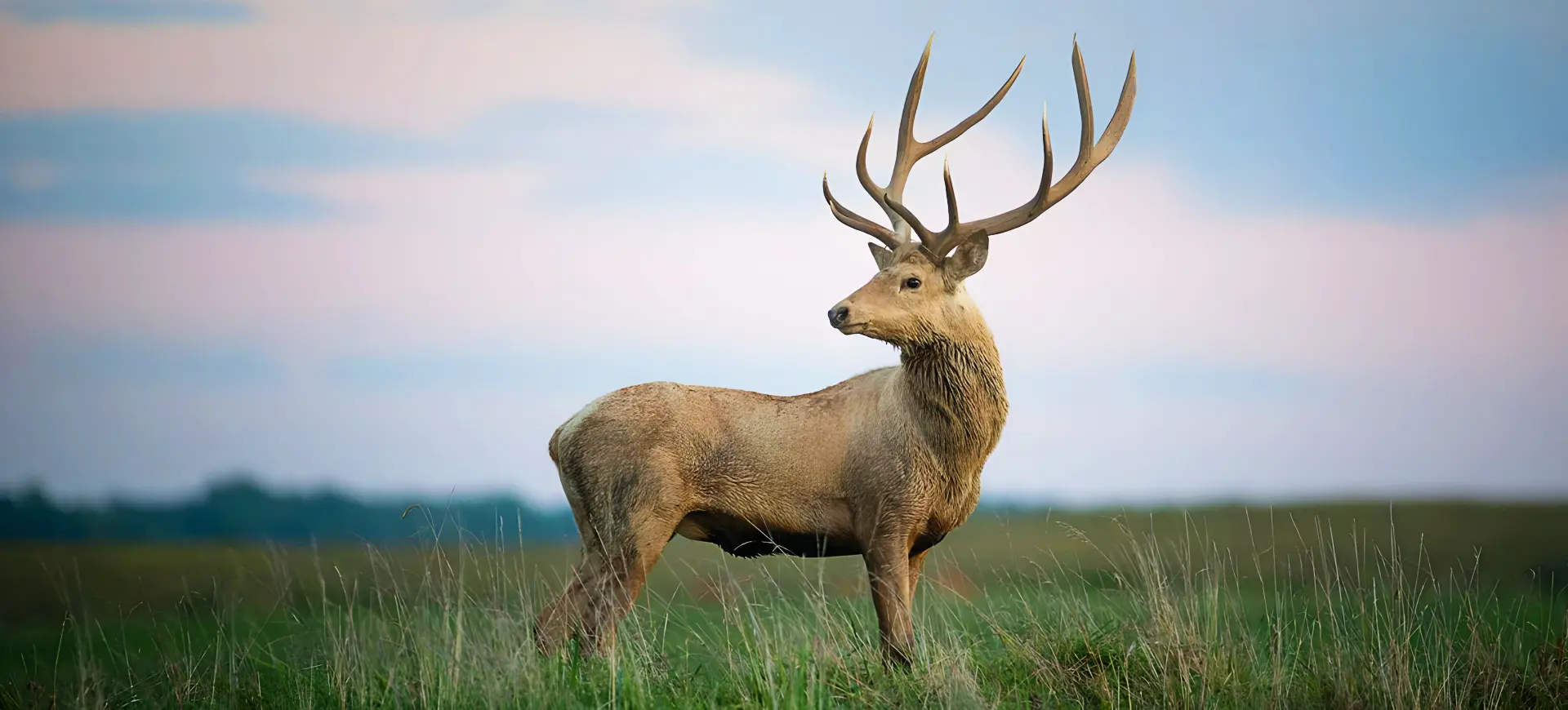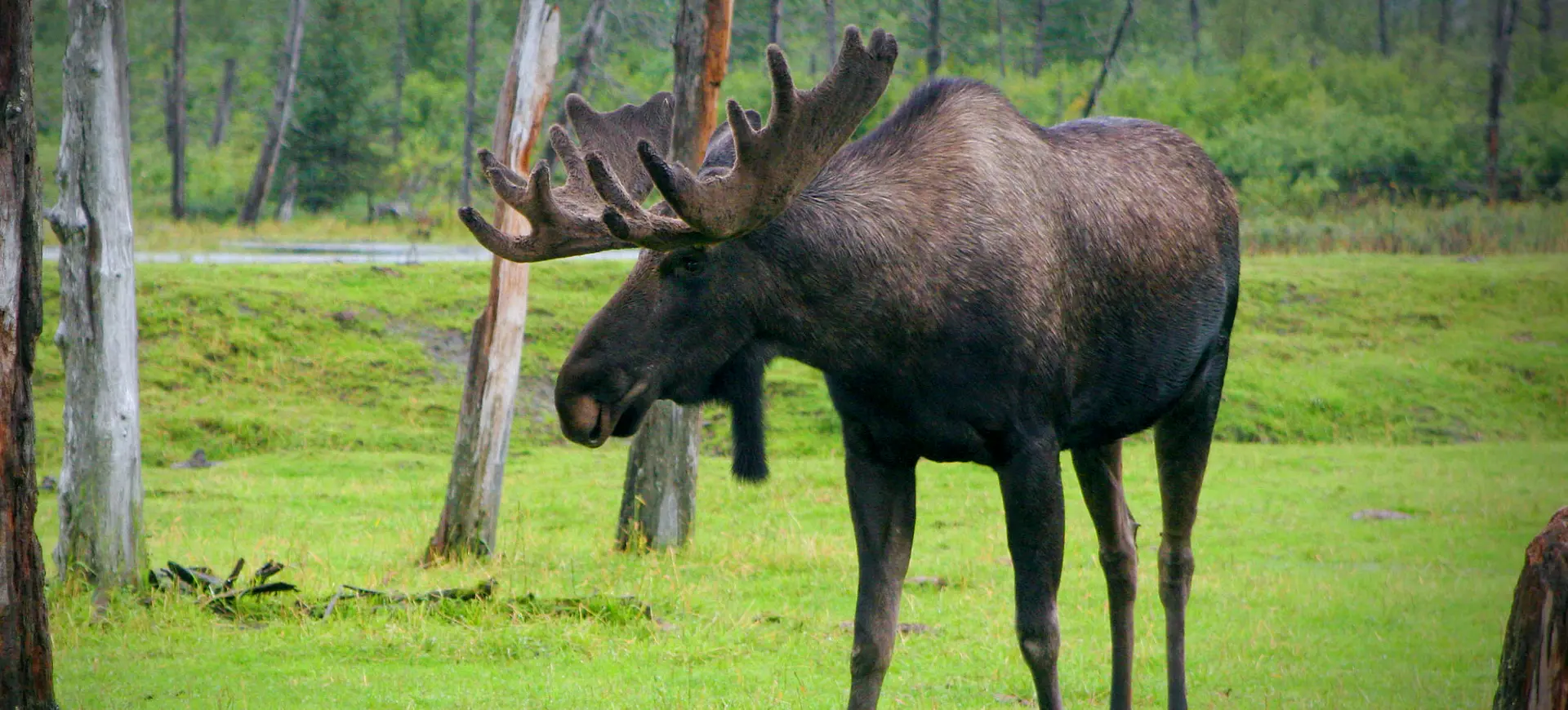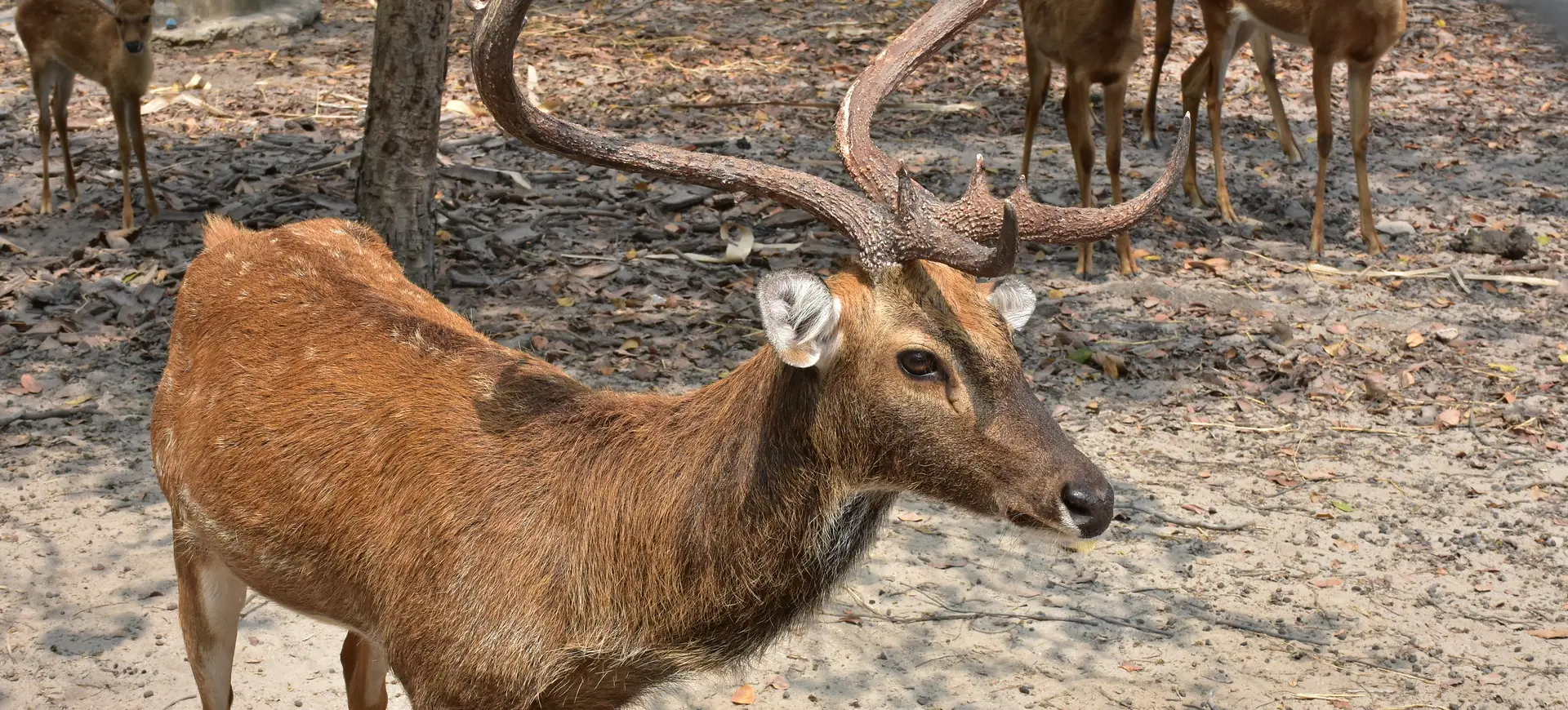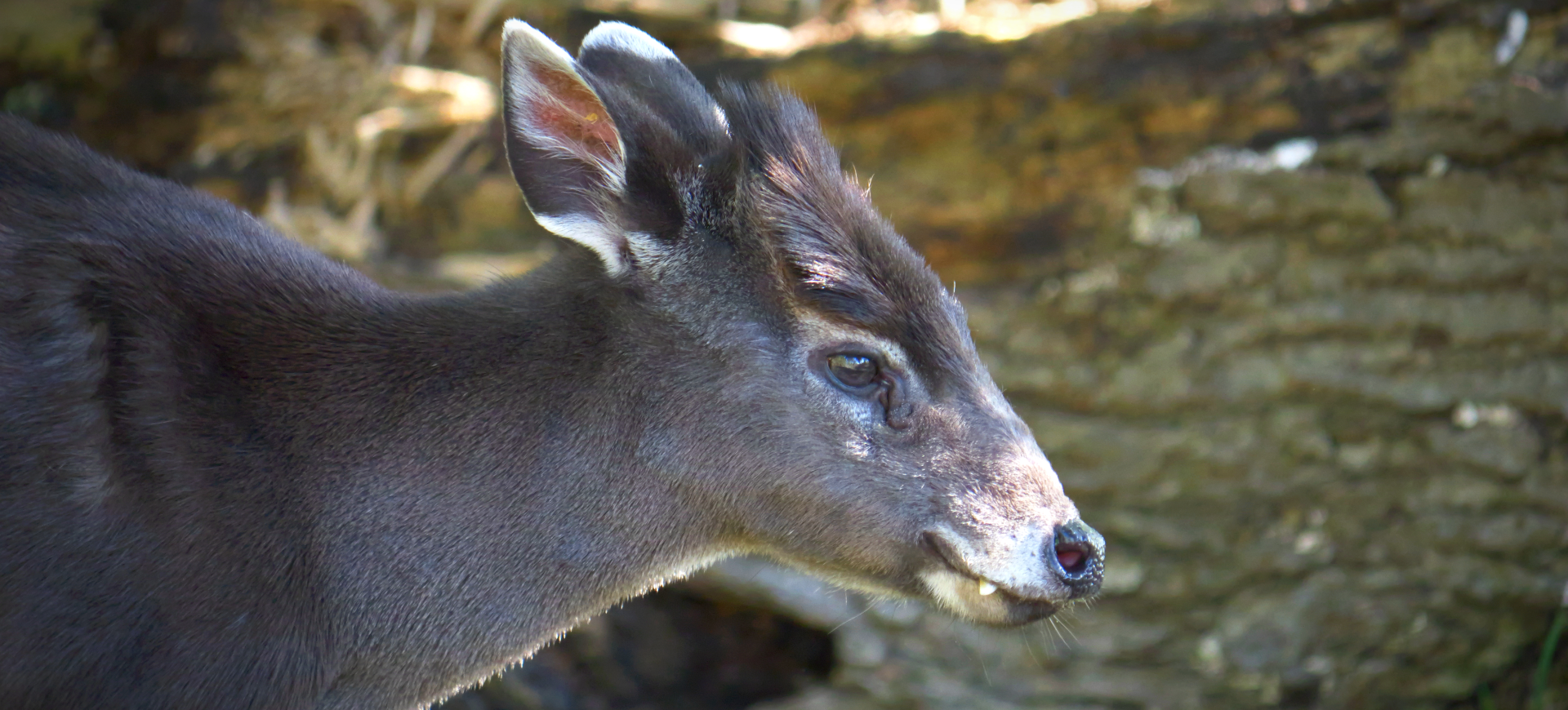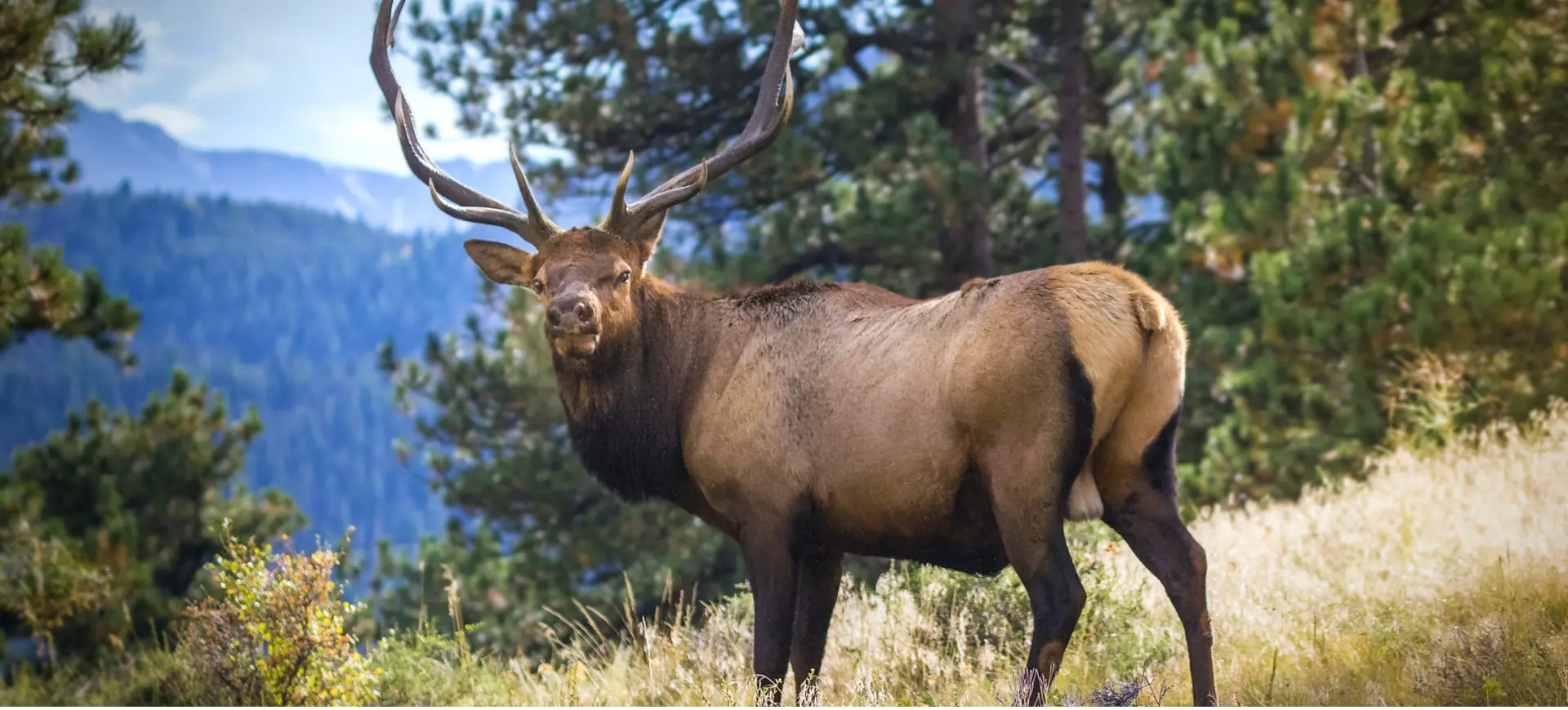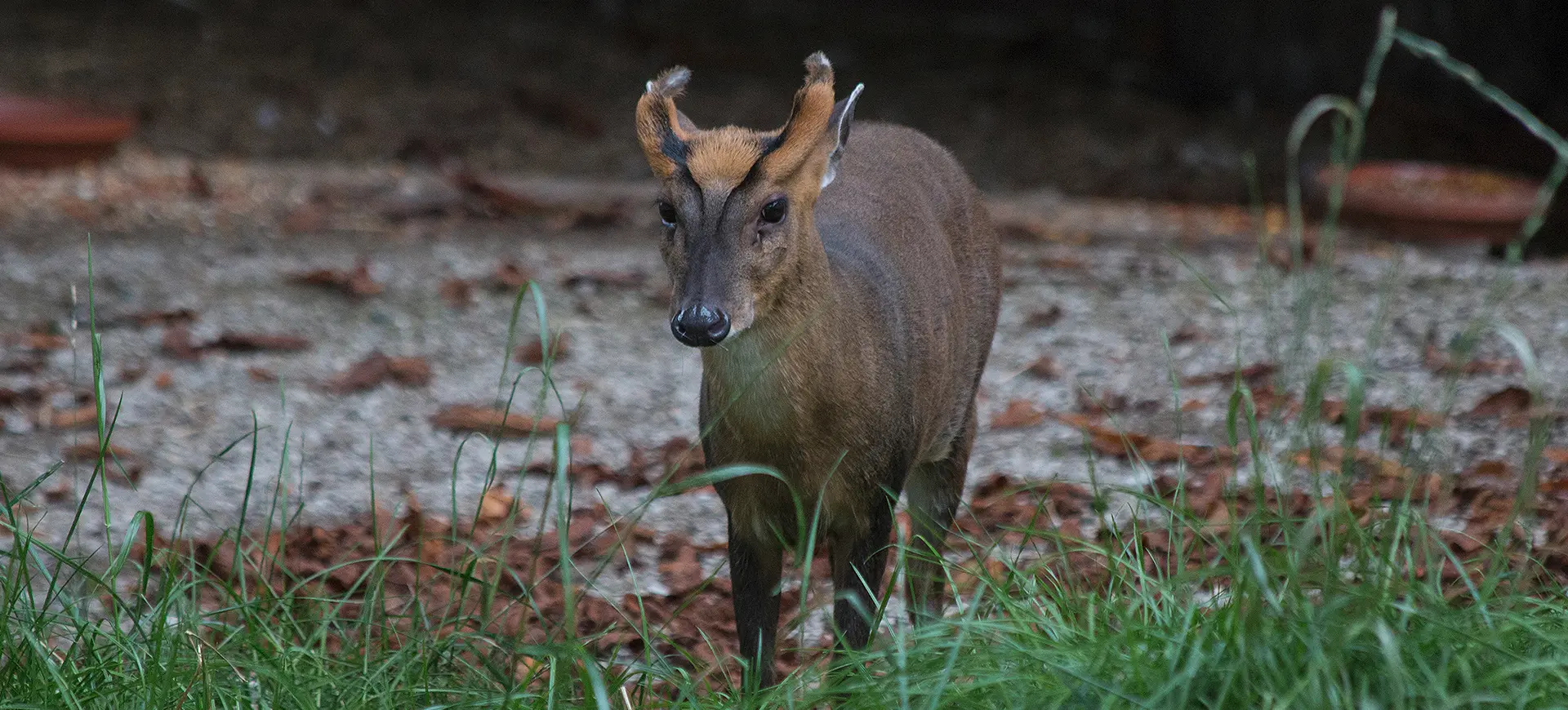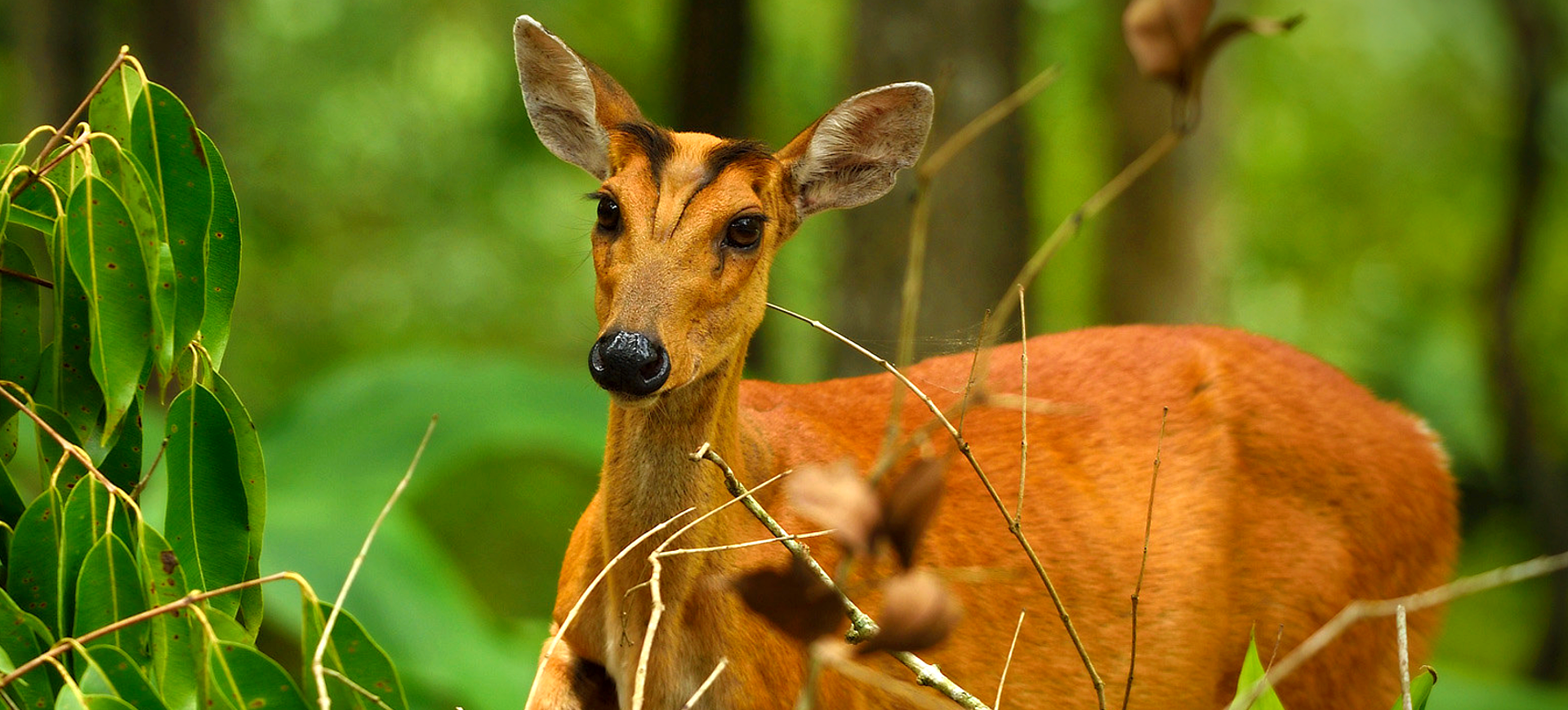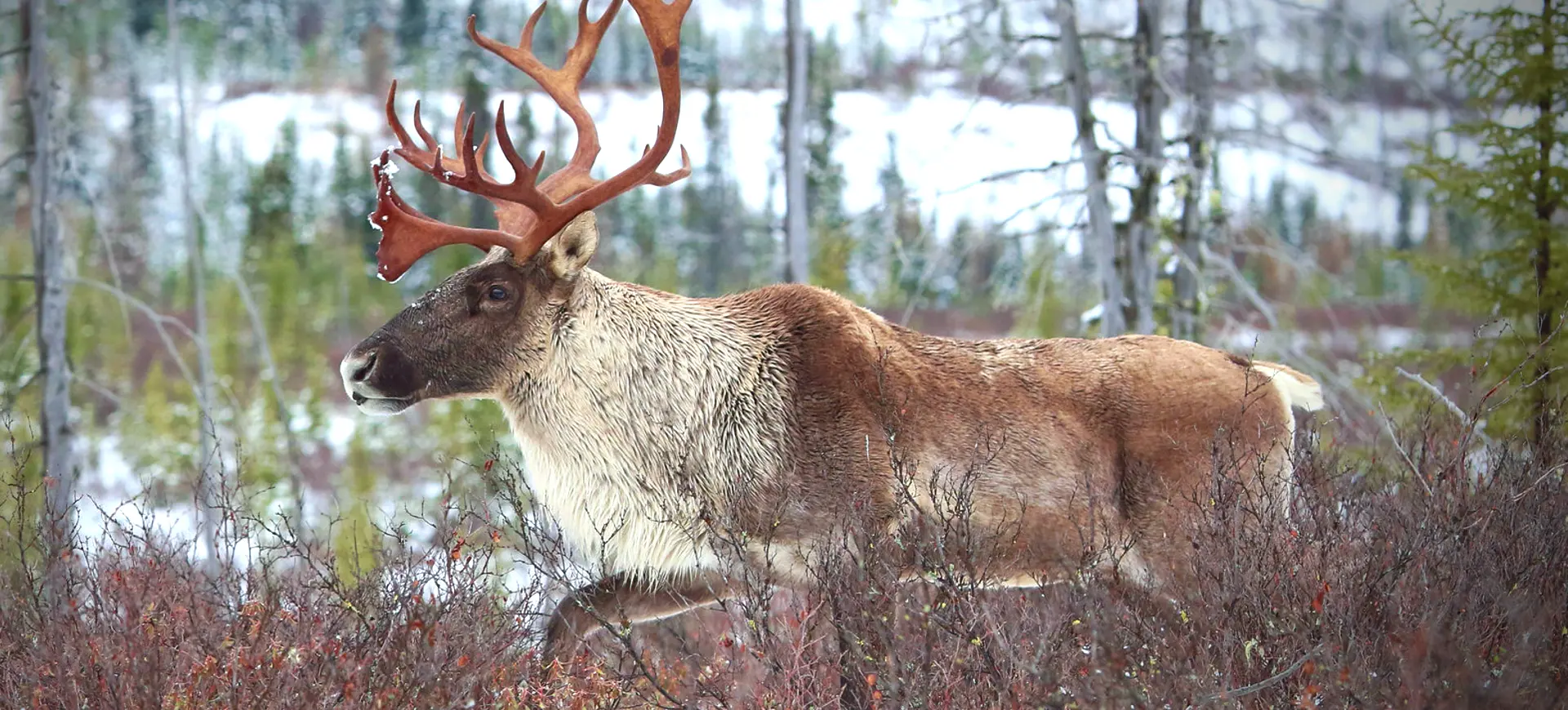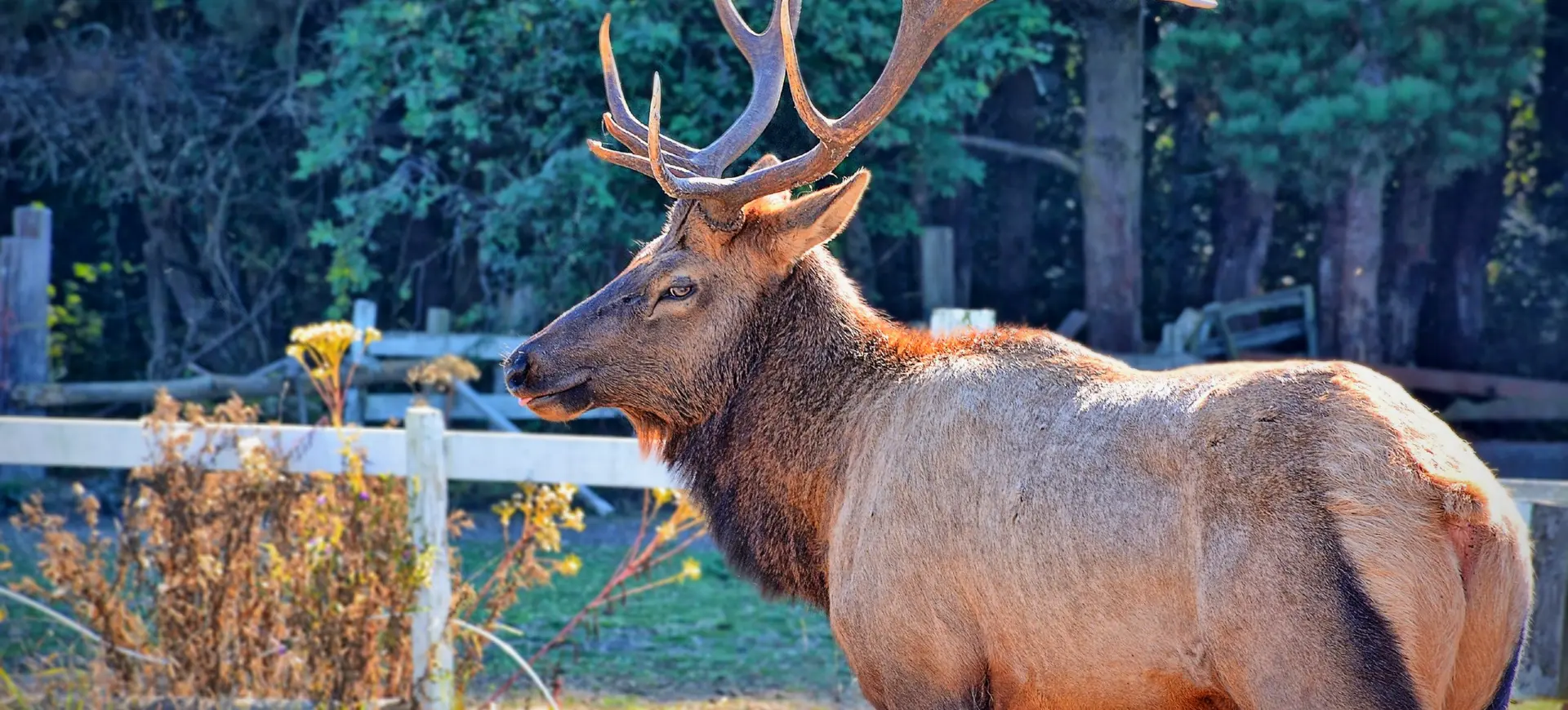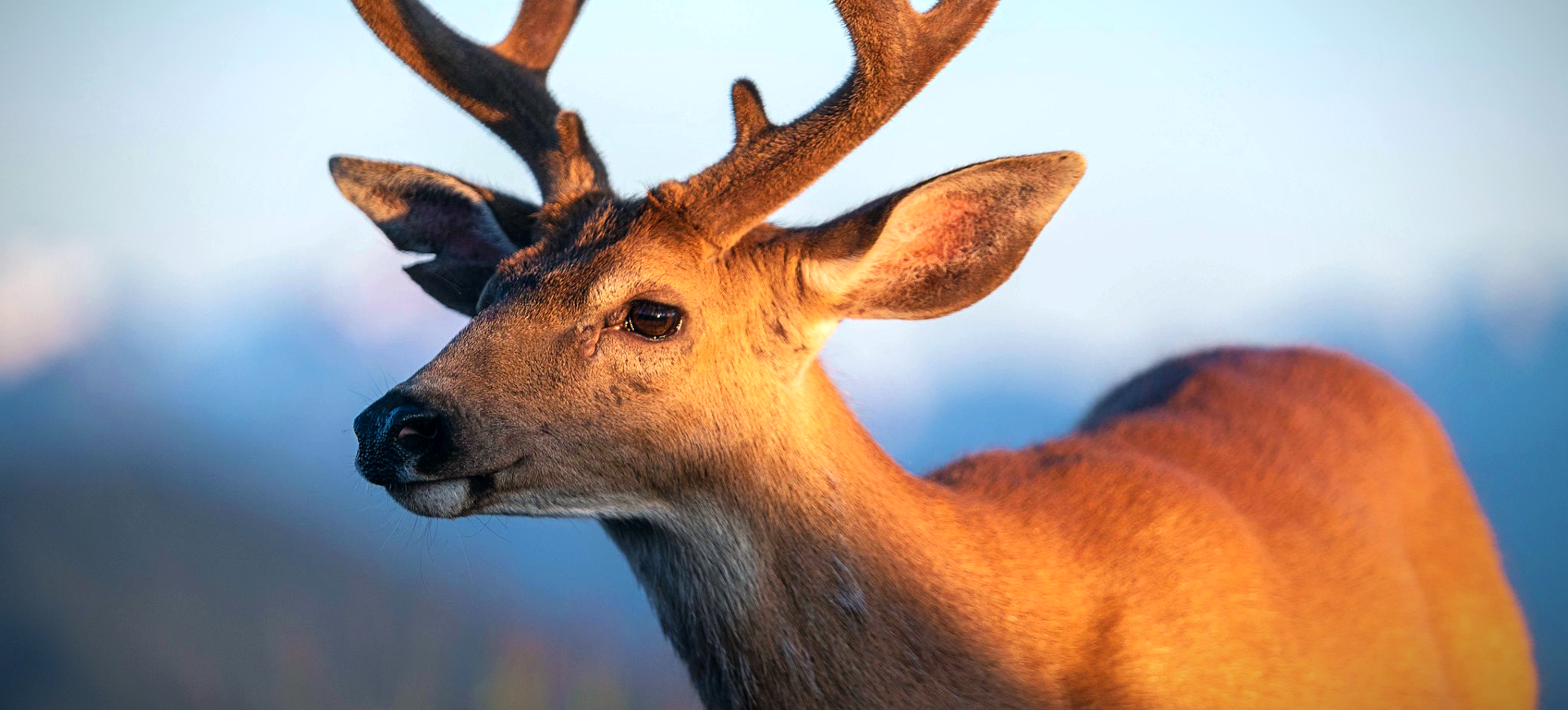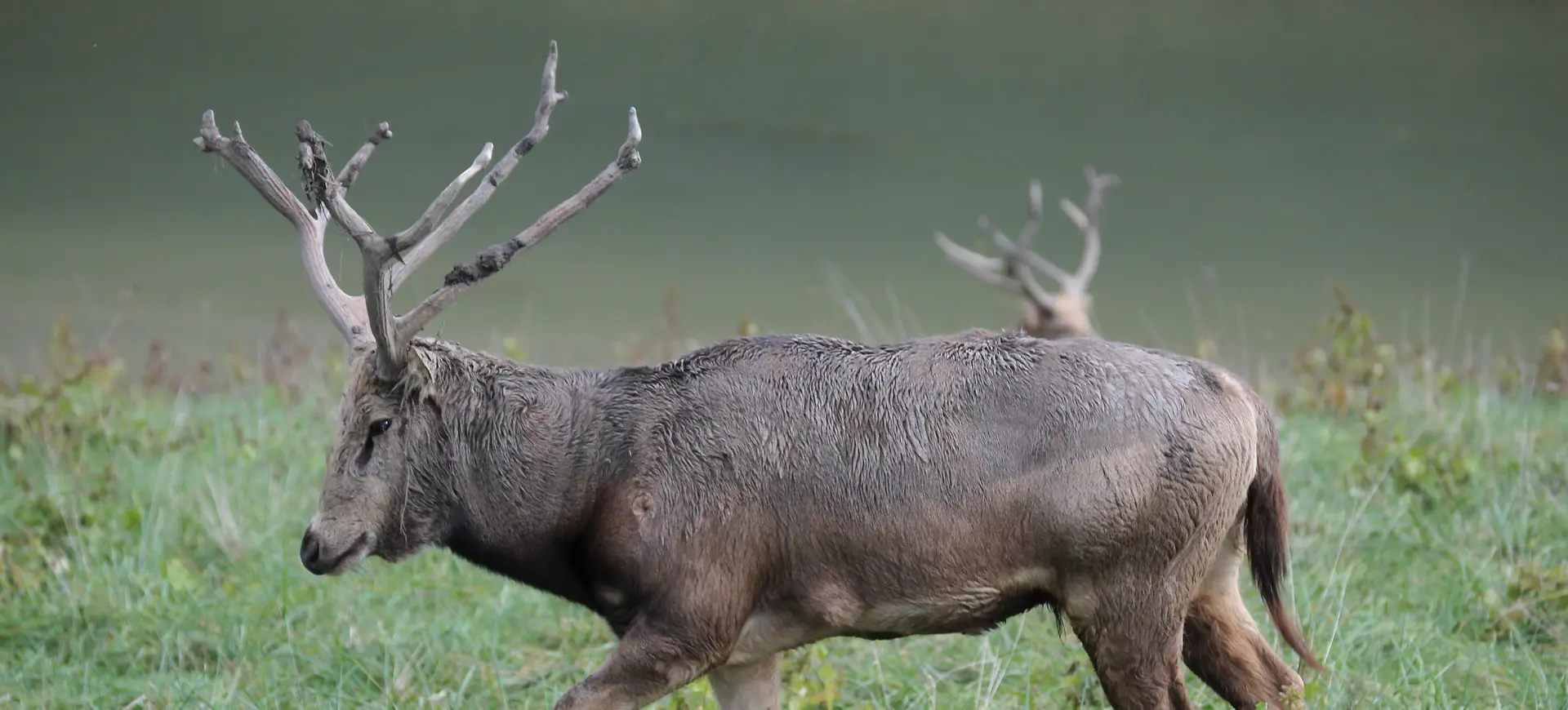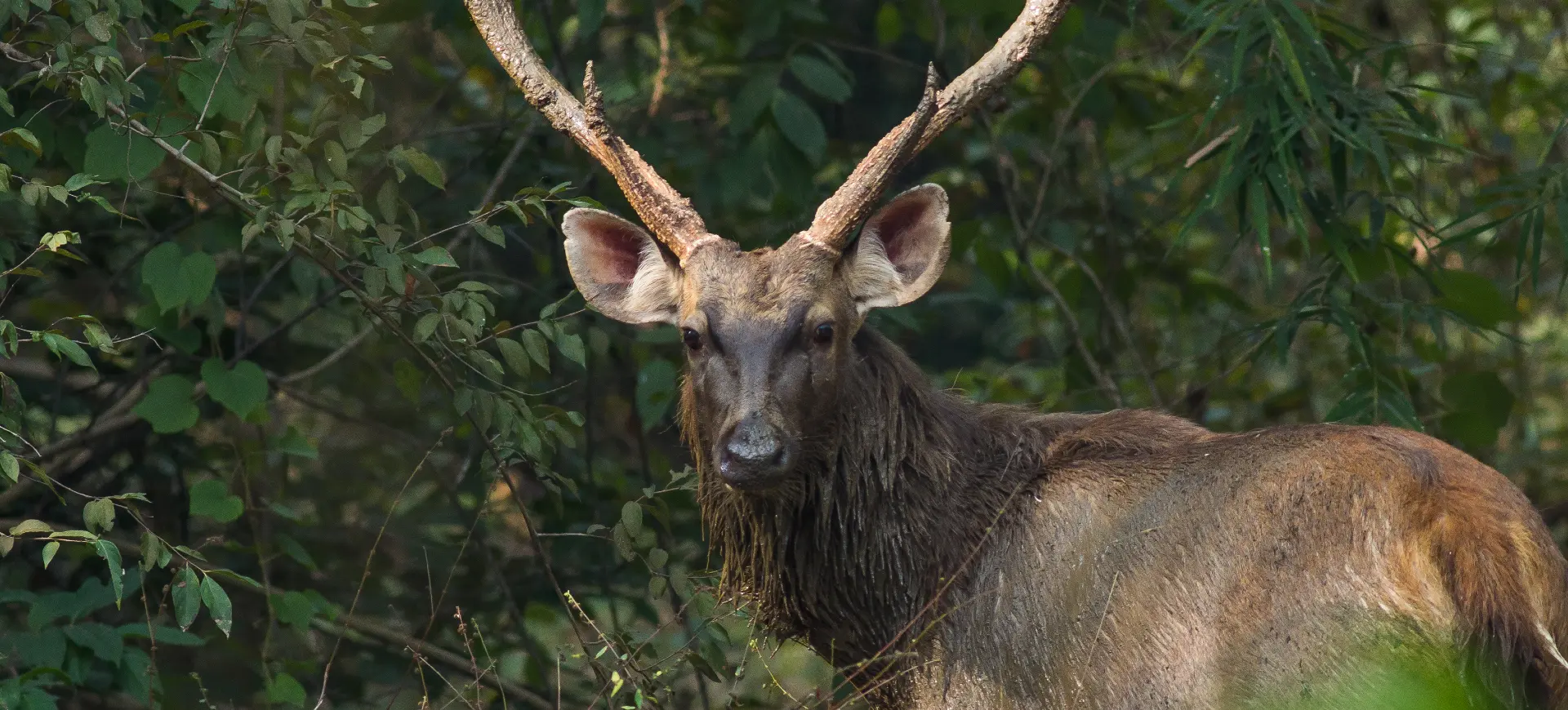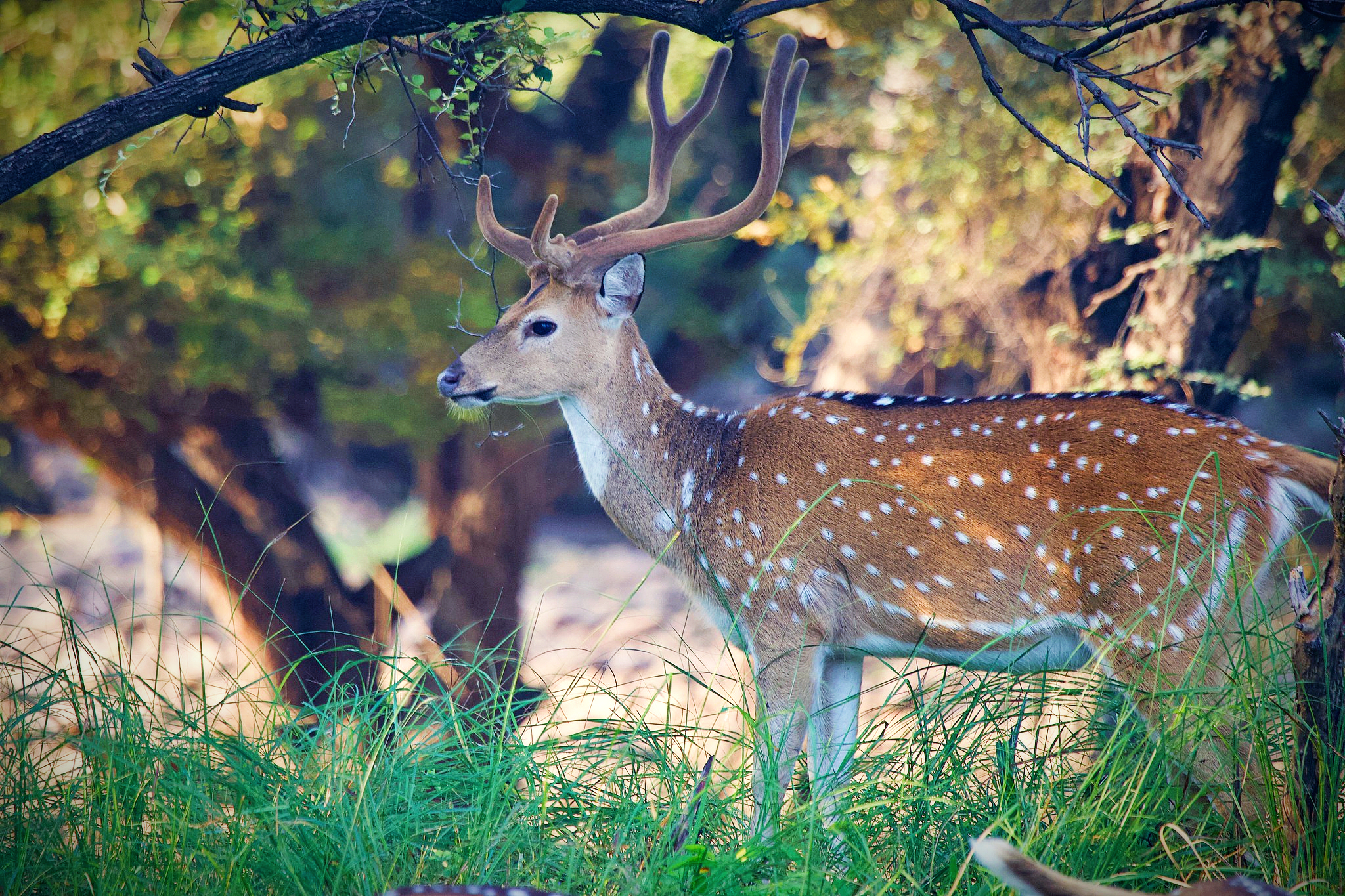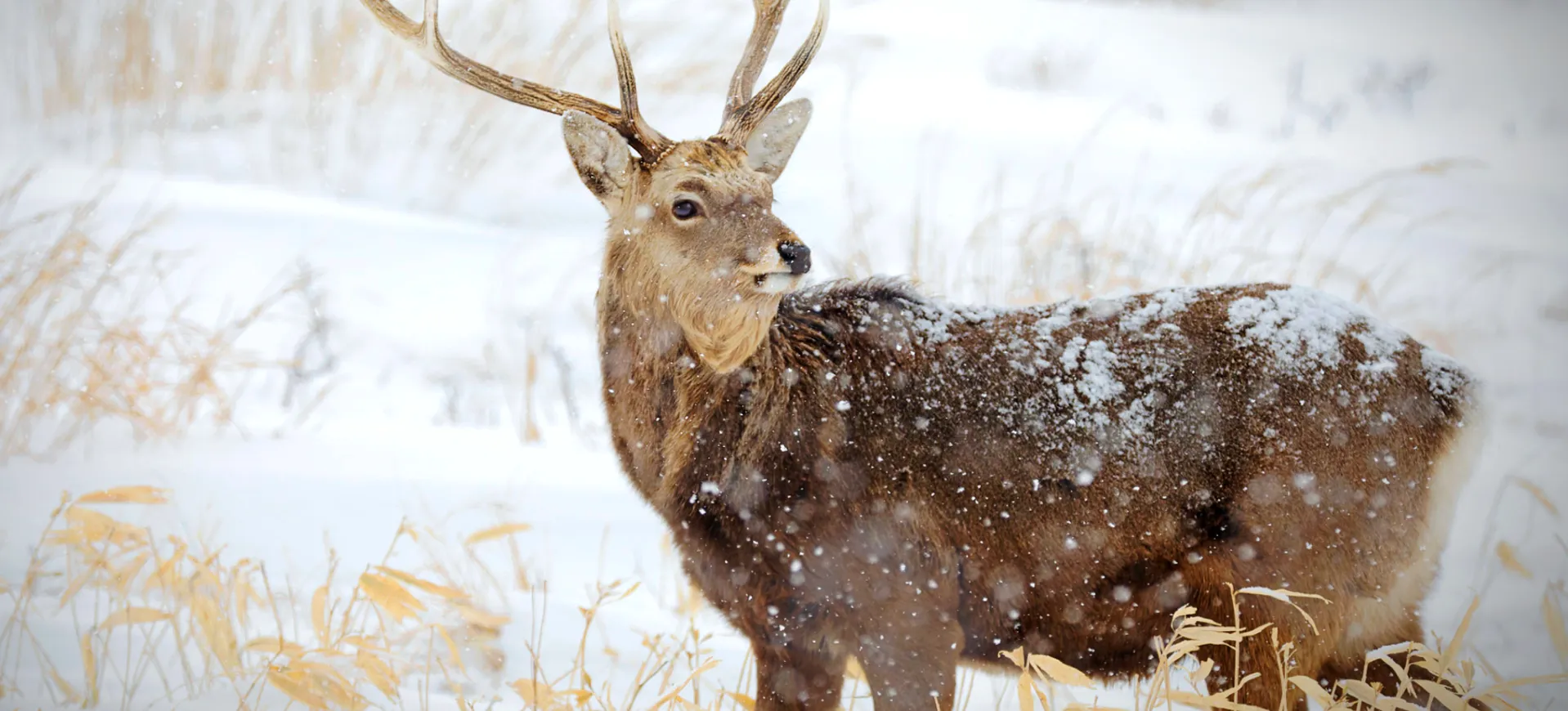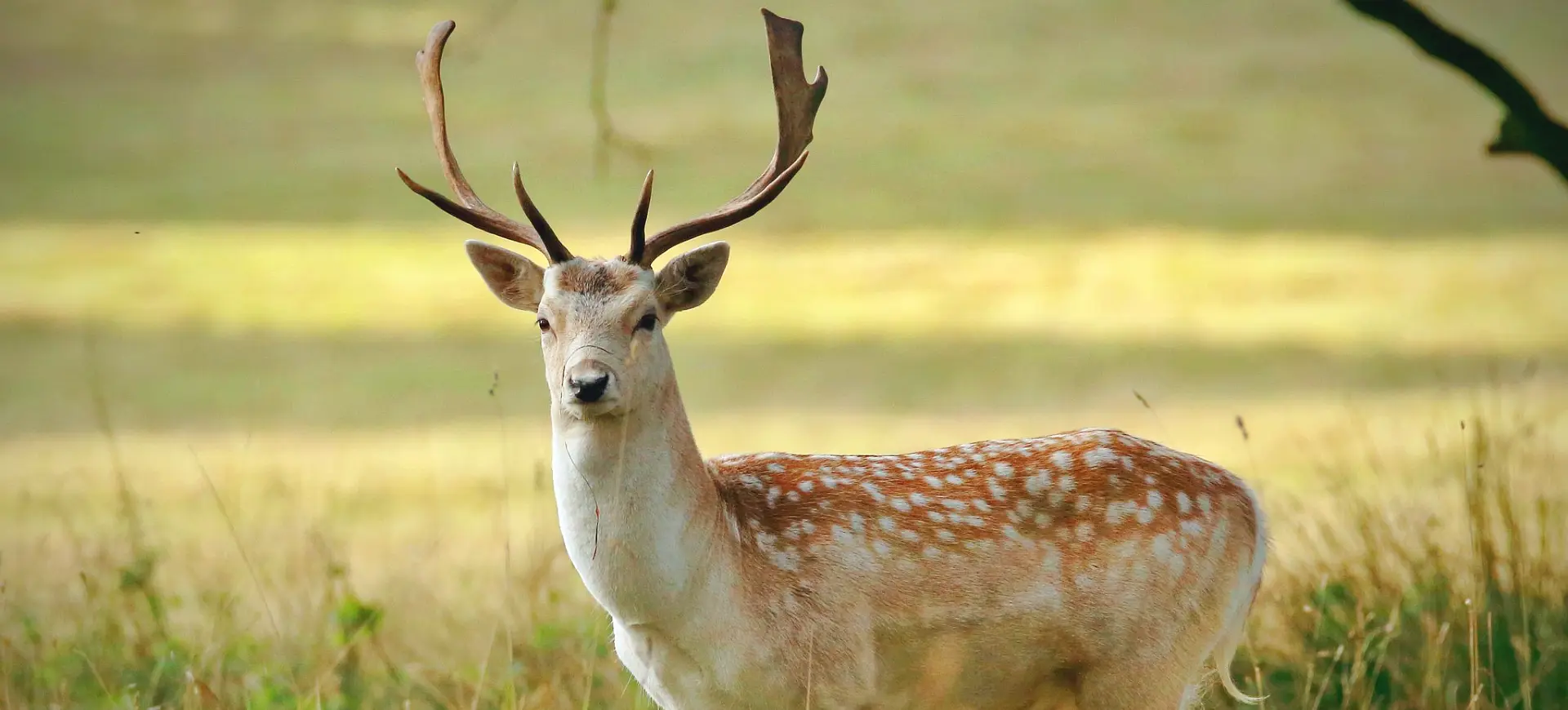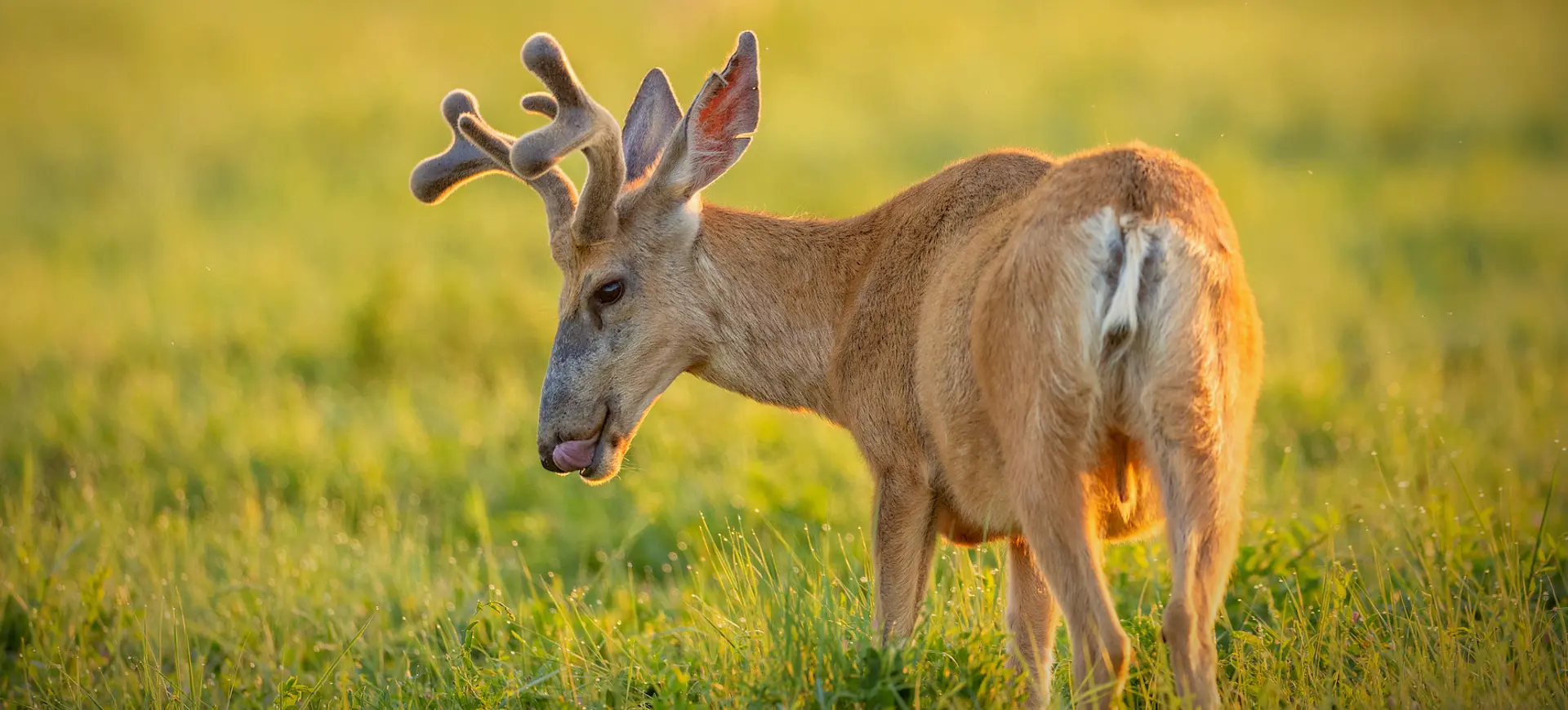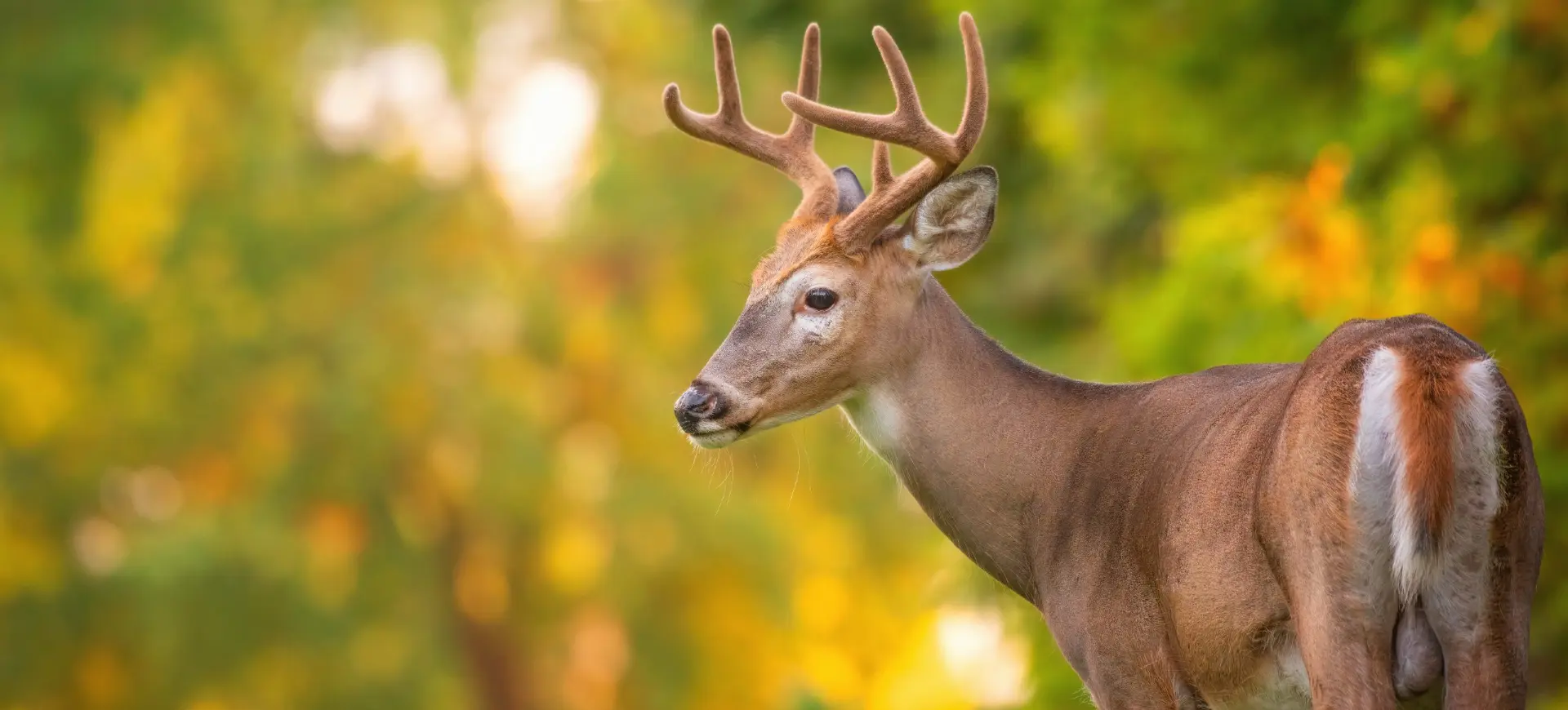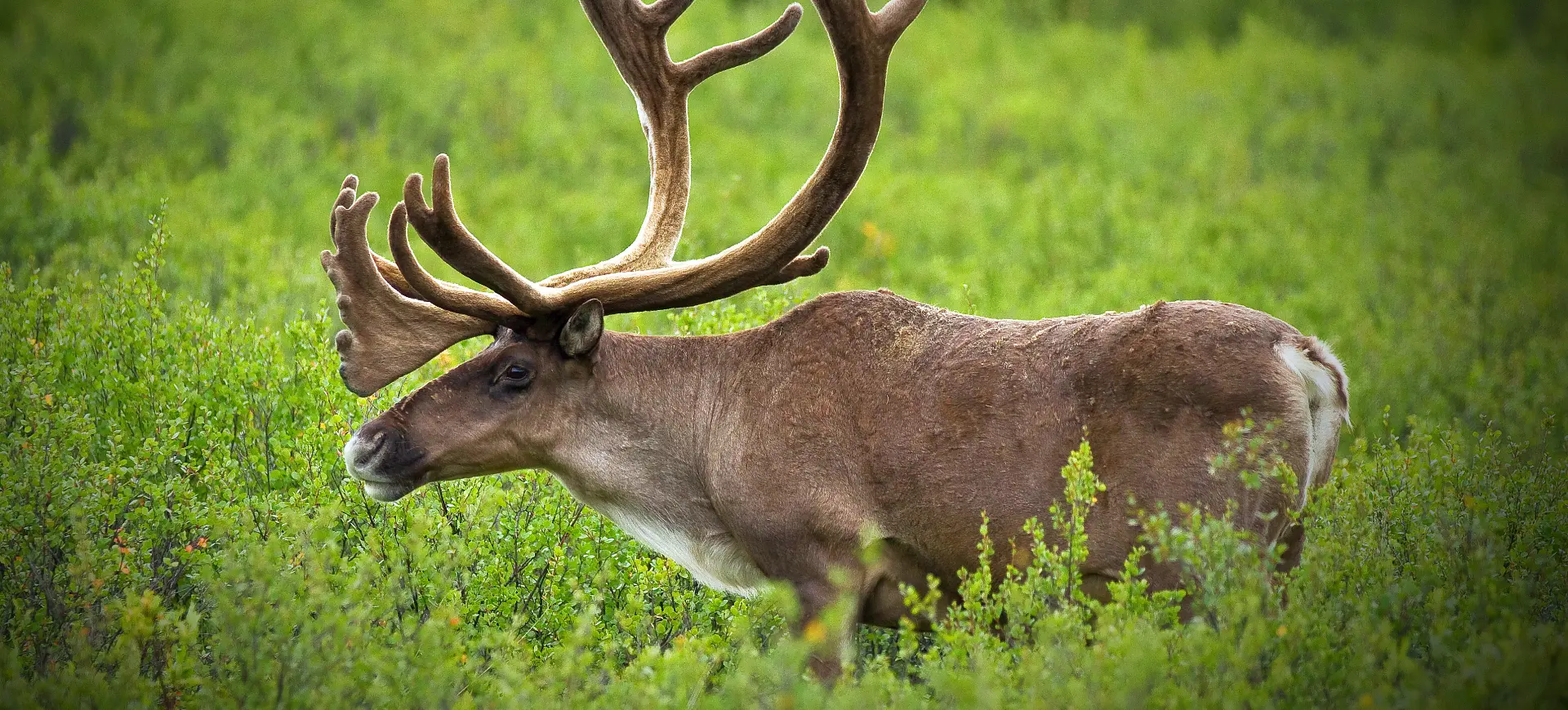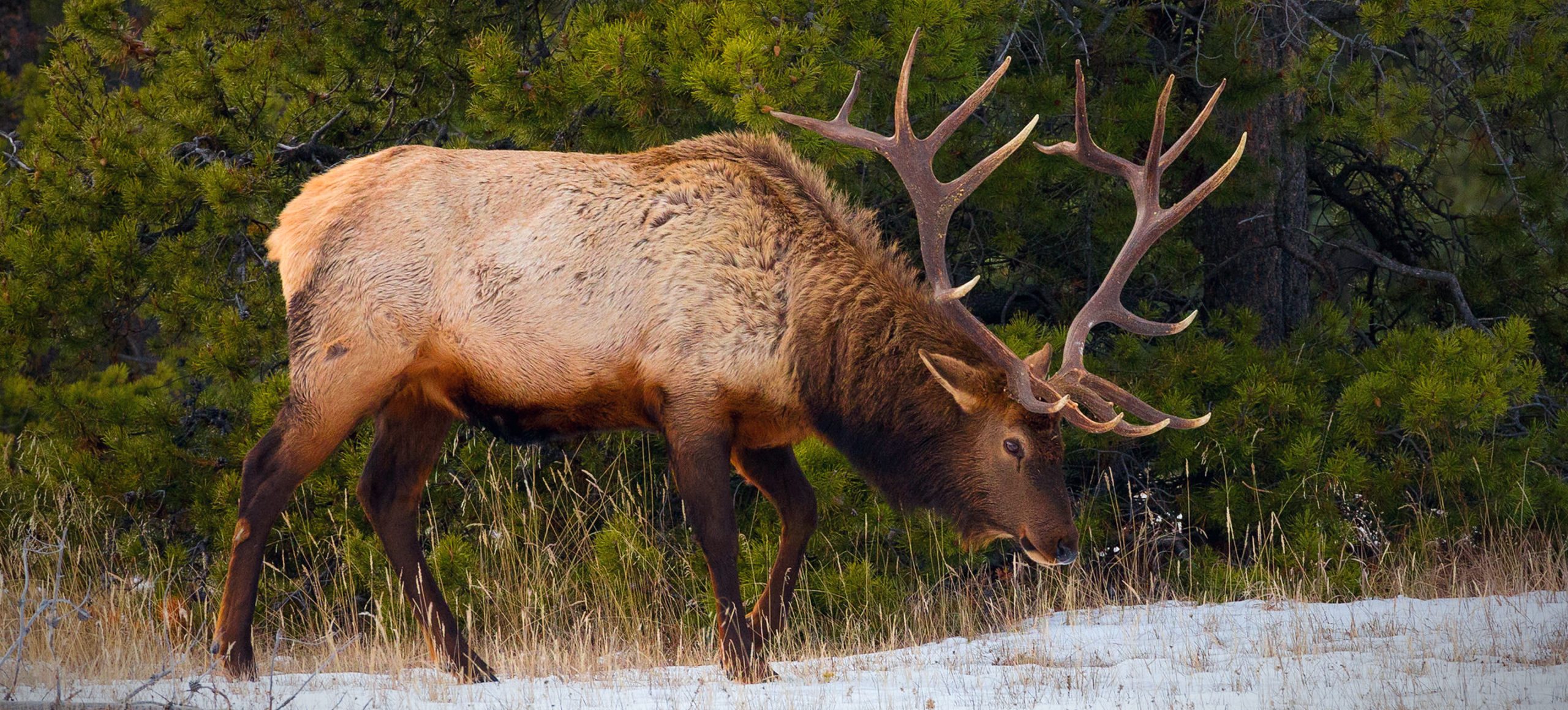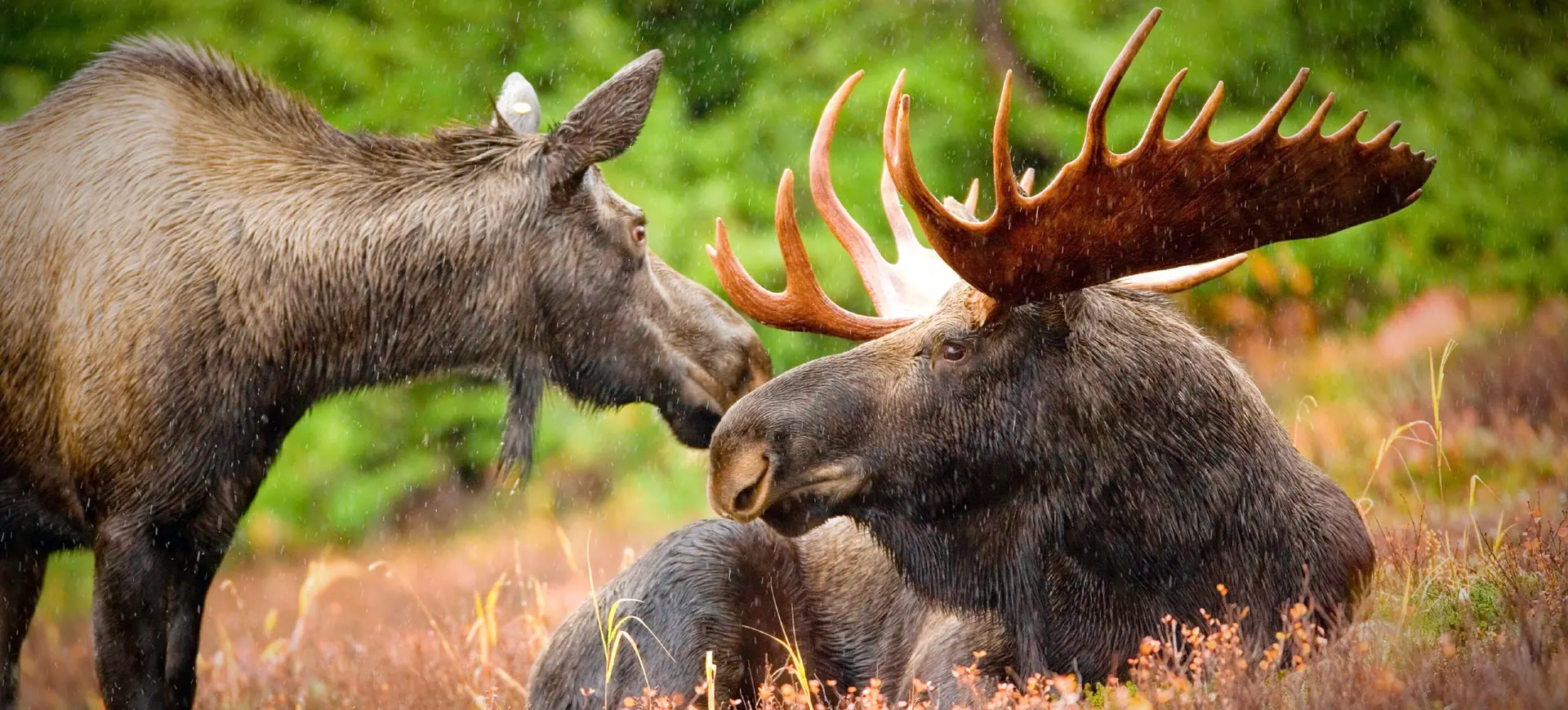Overview
The Red Deer (Cervus elaphus) is one of the largest deer species that primarily inhabits the regions of Europe, the Caucasus Mountains, Asia Minor, Iran, parts of western Asia, and central Asia. It has also been introduced in other parts of the world, such as New Zealand, Australia, and Argentina. They display a reddish-brown coat during summers, which turns thicker and greyer in the winters. This species is notably characterized by its impressive branched antlers, exclusive to males.
Males of this species are commonly called “stags,” while females are termed “hinds.” Red Deer exhibit sexual dimorphism in size, with males being significantly larger and heavier than females. The iconic antlers of the stag are shed and regrown annually, becoming more branched and impressive with age. Their vocalizations, especially during the rutting season, are distinctive deep calls that vary between individuals.
Historically, Red Deer held cultural and economic significance in many societies, from being hunted as game to their depiction in cave art from prehistoric times. Their habitats have varied over time, and while they’ve adapted to several environments, human influence has played a significant role in their distribution and numbers.
Taxonomy
Kingdom
Phylum
Class
Order
Family
Genus
Species
Sub Species
Type
Physical Description:
Red Deer possess a sturdy and robust body. Their summer coat is a reddish-brown color, while it becomes more greyish in winter. The species exhibits white markings on the underbelly, around the eyes, and tail. Males, known as stags, develop large, branched antlers, symbolizing their age and dominance. These antlers are primarily used during rutting fights against other males.
Stags grow their antlers during spring and shed them in the winter. The antlers are made of bone and can grow at a rate of 2.5 centimeters daily. The stags and hinds have long legs, enabling them to run fast and escape predators. The overall body structure is muscular, especially in males, necessary for aggressive rutting behavior.

Lifespan: Wild: ~13 Years || Captivity: ~20 Years

Weight: Male: 350-530 lbs (158-240 kg) || Female: 260-370 lbs (118-168 kg)

Length: Male: 6.9-8.2 feet (2.1-2.5m) || Female: 5.6-6.6 feet (1.7-2m)

Height: Male: Not typically measured in height but shoulder height is 3.9-4.7 feet (1.2-1.4m) || Female: Shoulder height is 3-4.3 feet (0.9-1.3m)

Top Speed: 40 mph (64 km/h)
Characteristic:
Native Habitat:
Red Deer historically roamed vast areas of Europe and Asia. Their preferred habitats include open woodlands, moorlands, and uplands. These regions provide them with abundant food sources and shelter from predators. Their habitats have been modified or reduced in many areas due to human activities, including agriculture and urbanization.
Their adaptability has allowed them to thrive in different habitats, from the mountainous regions of Scotland to the forests of Germany and the grasslands of Spain. They prefer a mixture of forested areas for shelter and open grasslands or moors for grazing. Changes in land use, forest clearing, and hunting pressures have influenced their distribution over the years.
Climate Zones:
Biogeographical Realms:
Countries:
Diet:
Diet & Feeding Habits:
Red Deer are herbivores, primarily consuming grasses, sedges, forbs, and shrubs. Their dietary preferences vary depending on the season. During the summer, they prefer fresh grasses; in winter, they often browse shrubs, heather, and trees. Due to their large size, Red Deer require substantial food intake to sustain their energy levels.
The feeding habits of Red Deer also change according to the time of day. They generally prefer to graze during dawn and dusk to avoid predators. They might be seen grazing during broad daylight in areas where they feel safe or where human disturbances are minimal. Their four-chambered stomach allows them to efficiently digest fibrous plant material, regurgitating and chewing cud for further processing.
Mating Behavior:
Mating Description:
The mating season of Red Deer, commonly referred to as the “rut,” occurs during autumn. During this period, stags became increasingly aggressive, fighting fiercely for dominance and mating rights with hinds. These clashes involve locking antlers and pushing against each other, often resulting in injuries. Stags also produce loud calls or “roars” to establish their territory and attract females.
Hinds come into estrus for a short period; during this time, the dominant stag will mate with multiple females. After mating, hinds go through a gestation period, culminating in the birth of usually a single calf in the late spring or early summer. Calves are born with spotted coats, which provide camouflage in the initial months of their life.
Reproduction Season:
Birth Type:
Pregnancy Duration:
Female Name:
Male Name:
Baby Name:
Social Structure Description:
Red Deer exhibit a gregarious nature, forming groups or “herds.” The composition of these herds varies depending on the season. Outside the rutting season, males form bachelor groups, while females and their offspring group. As the mating season approaches, mature stags become solitary and establish territories to attract hinds.
The social structure of these Deer is hierarchical, with dominant individuals, often older and larger, leading the group. Interactions within the herd are generally peaceful, except during the rut when males become aggressive and confrontational in their bid to secure mating rights.
Groups:
Conservation Status:
Population Trend:
Red deer are considered to be of least concern in conservation status due to their wide distribution and large population in many regions. However, regional populations may face threats and may be in decline due to habitat loss, poaching, and other anthropogenic factors.
Efforts are in place in various countries to manage and conserve their populations, both in the wild and in reserves. They are hunted as a game in many regions, and sustainable hunting practices have been established to ensure that the populations remain stable. It’s essential to continue monitoring their numbers and trends to ensure their conservation in the future.
Population Threats:
The primary threats to the Red Deer population include habitat loss due to deforestation and agricultural expansion, road accidents, and illegal hunting or poaching. In some regions, particularly where they have been introduced, Red Deer can negatively impact native flora and fauna, making them considered pests and subsequently culled.
In their native range, human disturbances, particularly due to urbanization and infrastructure development, can disrupt their habitats. Diseases and parasites can also threaten local populations, impacting their health and reproductive success.
Conservation Efforts:
Conservation efforts for Red Deer are varied across their range. In many regions, they are protected within national parks and reserves, ensuring a habitat safe from deforestation or agricultural expansion. Sustainable hunting practices have been implemented in areas where they are hunted as a game, ensuring that the populations are not over-exploited.
In places where they are considered pests, management practices are in place to control their numbers while minimizing harm. Educational and awareness campaigns have also been initiated in several regions to inform the public about the ecological role and importance of Red Deer and to curb illegal hunting activities.
Additional Resources:
Fun Facts
- Red Deer antlers can grow up to an inch daily during their peak growth phase.
- The roars of stags during the rutting season can be heard from miles away.
- Stags shed and regrow their antlers every year.
- Calves are born with white spots on their back, which provides camouflage.
- The Red Deer is the national animal of Scotland.
- For centuries, humans have used their antlers for tools, weapons, and ornaments.
- They have a four-chambered stomach, which helps in digesting tough fibrous food.
- In some cultures, Red Deer have significant symbolic and cultural importance.
- Red Deer have a keen sense of smell and hearing, which helps them detect predators.
- They can jump up to 3 meters in height when threatened or escaping predators.








